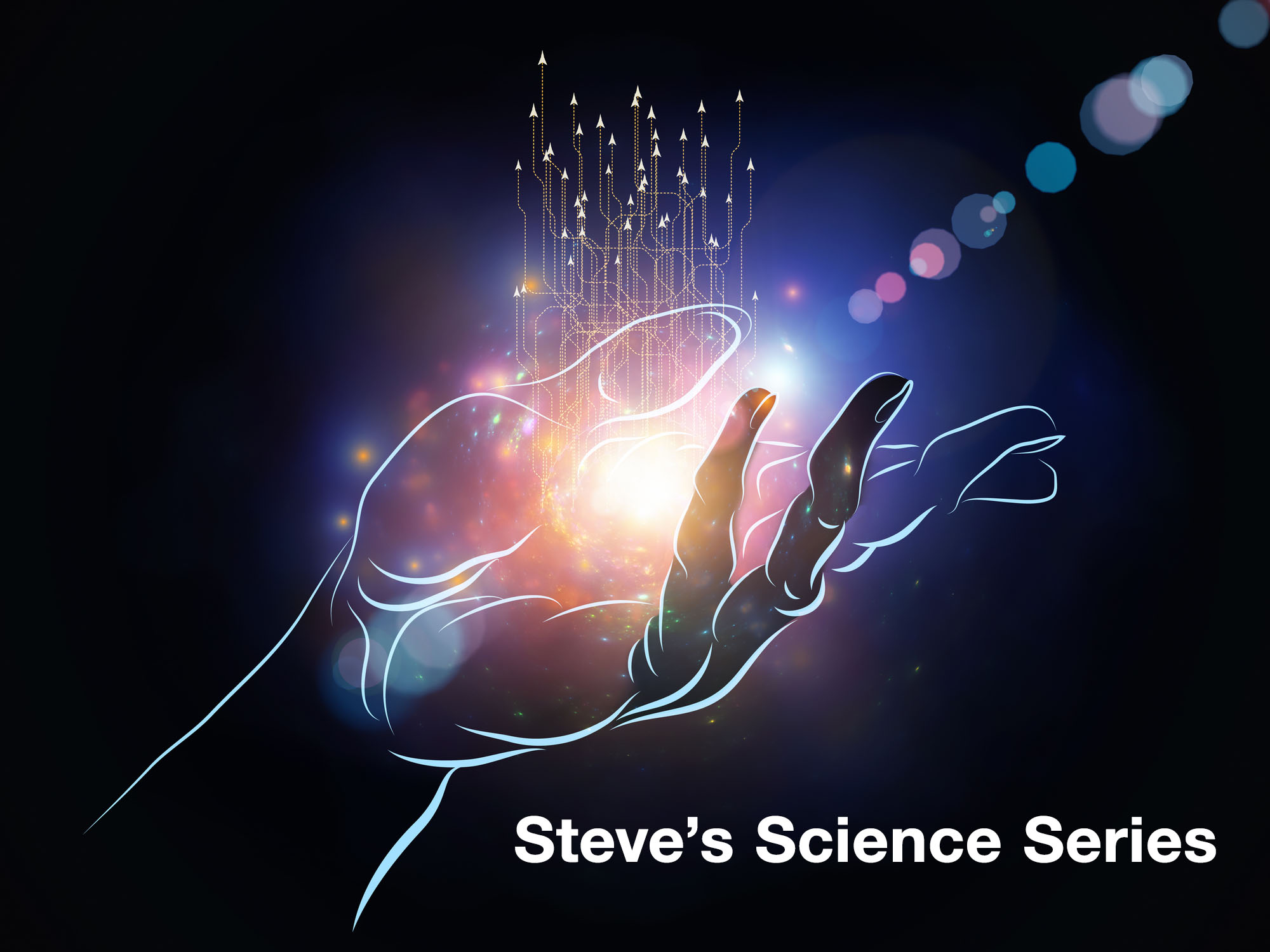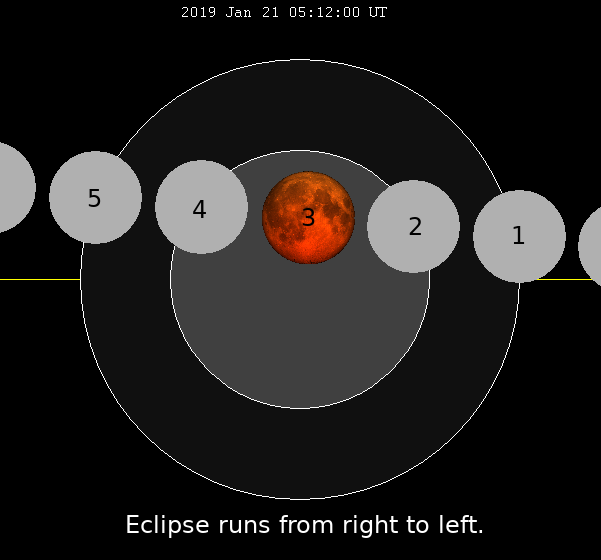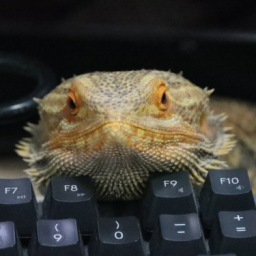Super Blood Red Wolf Moon?
It’s “Super” because the Moon is in an elliptical orbit, sometimes it’s closer to Earth, sometimes farther. When it’s close during a full moon, it gets called a Super Moon. (Frankly, I think those are a bit overhyped, but there it is.)
“Blood Red” because what we will have is a lunar eclipse. During lunar eclipses the Moon is not lit directly (like a full moon is) but gets all of its illumination from sunlight refracted through the Earth’s atmosphere around the sunrise/sunset line (known as the “terminator” but Ahnuld has nothing to do with it). Red light, of lower energy and frequency but longer wavelength, gets refracted more than blue light, so the Moon gets a lot of red light.
And finally, the full Moon in January is traditionally known as the “Wolf Moon” and let’s face it, WolfMoons are pretty cool, and here at the Q Tree House we eagerly await the return of a certain WolfMoon.
How A Lunar Eclipse Works
The following diagram is not even remotely to scale, but it gets the critical things right. The Sun is bigger than the Earth, and the Earth is bigger than the Moon.
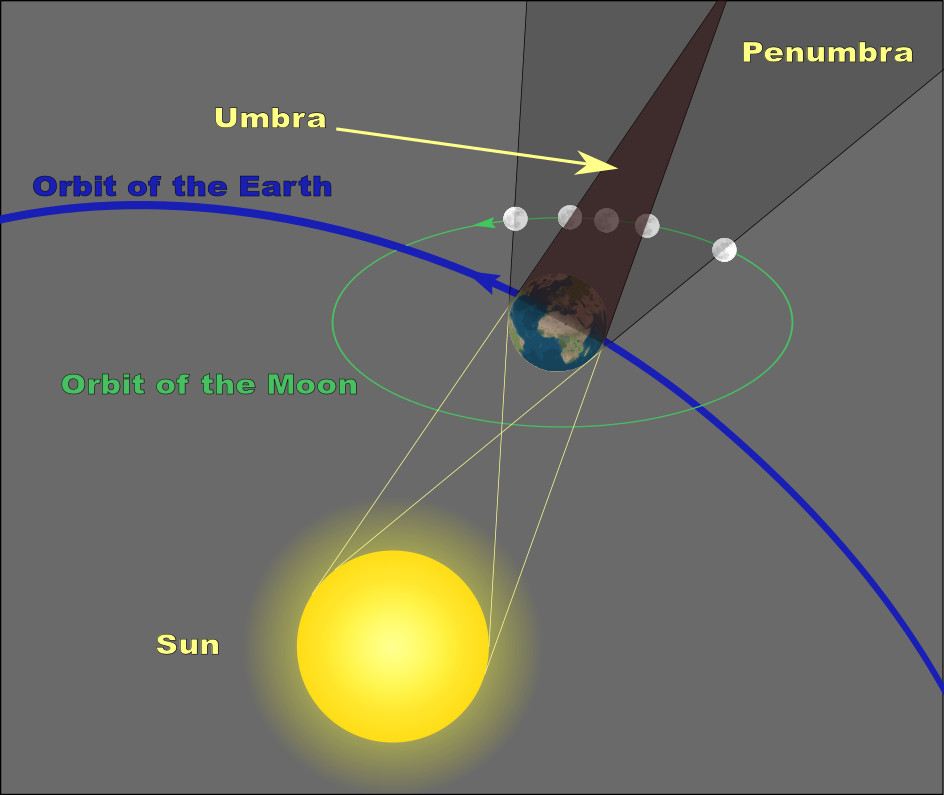
The Earth orbits the Sun in an ellipse in a flat plane. The Moon orbits the Earth in another, much smaller ellipse, in a flat plane. But those two planes are tilted with respect to each other. So usually, when the Moon passes “behind” the Earth, as seen from the Sun, it looks like it passes above or below the Earth. We, on Earth, get to see a fully illuminated “front side” of the Moon, and we call it a “full moon.” Or to put it another way, the Moon misses Earth’s shadow completely. But sometimes it does pass through Earth’s shadow, either grazing it or plowing more deeply through it. Those are lunar eclipses, and they can be partial or full.
The umbra, in the diagram above, is the full shadow of Earth. If you’re in the umbra, you can’t see any part of the Sun. That’s true for anyone standing on Earth at night time—yes, at night you’re in Earth’s shadow, it’s often true for the International Space Station, and sometimes it’s true of the Moon, too—when the Moon is entirely in the umbra, that’s a total lunar eclipse.
The penumbra is the part of space where, if you look towards the Sun, the Earth partially covers it. If you’re far enough out in space, Earth appears smaller than the Sun, if you're closer, it’s larger but the Sun is partially behind it. (If you think about it, the Sun, as it rises and sets, is in this situation; your head is in the penumbra at those times.)
OK, so let’s abandon our “God’s eye” view of the situation, and put ourselves back on Earth’s surface, and look down the cone of Earth’s shadow. It’s normally invisible, unless something crosses through it, and then we’ll see the shadow cast.
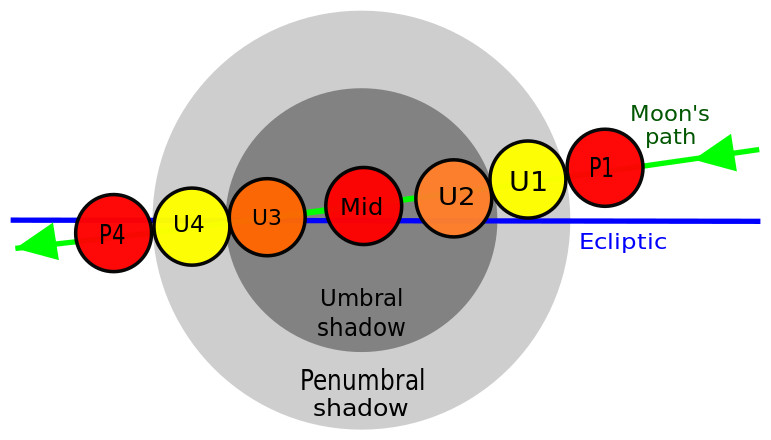
The Moon tracks from west to east, through the shadow.
That might surprise you, but the Earth rotates, west to east, faster than the Moon moves, and so the Earth’s shadow (and the stars, planets, Sun, and Moon) appears to move the opposite way from the rotation. So we see everything move east to west, even though the real motion of everything up there is west to east.
So when there is a total lunar eclipse, the Moon first makes contact with the penumbra, at P1. Then it moves entirely into the penumbra, looking a bit dimmer but not red (it’s still getting some direct sunlight) and eventually touches the umbra at U1. As it moves into the umbra, it loses direct sunlight and picks up indirect sunlight. Finally at U2, the entire Moon is inside the umbra, and it will look red, brighter closer to the edge of the shadow. It then reaches the middle of the eclipse, and at U3, the first bit of the Moon exits the umbra. At U4 the Moon is entirely out of the umbra, and is completely out of Earth’s shadow.
From the point of view of someone on the Moon: P1: One person at just the right spot on the Moon would see Earth just touching the Sun. U1: Every place on the Moon sees the Earth partially covering the Sun; one spot just had the Sun completely disappear behind the Earth. U2-U3: At no place on the Moon is the Sun even partially visible. After U3, the Sun starts to come out from behind the Earth. At U4: Parts of the Moon start to see the entire Sun. P2: The entire sunward side of the Moon sees the entire Sun, Earth is no longer even partially blocking the Sun.
The Particulars for This Eclipse
OK, I’m going to give these times in Mountain Time (MT). Why? Because I think just for once people in the Eastern Time Zone (ET) should feel our pain. (Add two hours if you’re ET, e.g., 7:37 becomes 9:37 ET.)
7:37 PM MT: P1. The Moon moves partially into the Earth’s shadow.
8:34 PM MT: U1. The first parts of the Moon move completely into Earth’s shadow, receiving no direct sunlight. What you’ll see is a definite outline of the Earth’s umbra as the Moon moves further in, but part of the Moon will still be brightly lit by the Sun, so the weak red refracted light will be completely overwhelmed, the shadow will look black.
9:41 PM MT: U2. Now the Moon is entirely in the umbra, in the full shadow of Earth. By now it should look quite red, with the part closest to the edge of the umbra looking brighter.
10:12 PM MT: Mid eclipse. The Moon is farthest away from the edges of the shadow. For this eclipse (most lunar eclipses, actually), the Moon doesn’t actually cross through the center of Earth’s shadow. The picture at the top of this post shows the geometry of this eclipse.
Note: Sometimes not a lot of light gets refracted, and the Moon is unusually dark, but blood red is what’s usually seen. Again, the upper/north side of the Moon should look brighter than the southern/lower side, because it’s nearer to the edge of the shadow and more light refracts onto it.
10:43 PM MT: U3. Part of the Moon now exits the umbra, and starts receiving some direct sunlight again, and the red will rapidly disappear.
11:51 PM MT: U4. Part of the Moon exits the penumbra and is now getting full sunlight, while the right-hand side in the diagram above will still look a bit darker because it’s only getting a partial dose of direct sunlight.
12:48 AM (21st of January) MT: P2: The Moon has completely left Earth’s shadow, anyone on the day side of the Moon sees the entire Sun’s disk.
Tying this all together, now: Here’s a GIF of today’s eclipse. You’ll see Earth’s shadow and the Moon tracking west to east across the night sky, complete with special effects.
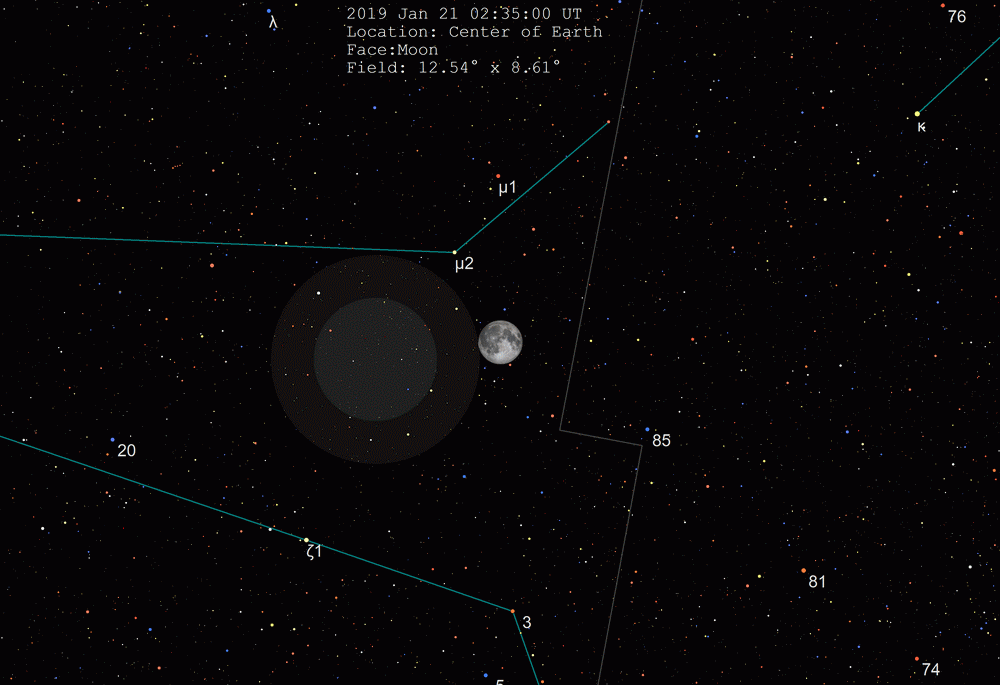
That’s it! Pretty much anyone in the lower 48 states should be able to see this; it’s not like a solar eclipse where you have to be standing along a specific line on the ground to see totality (that’s because the Moon’s umbra is almost down to a point at Earth’s surface during a solar eclipse).
And remember, it’s a WolfMoon!!!


